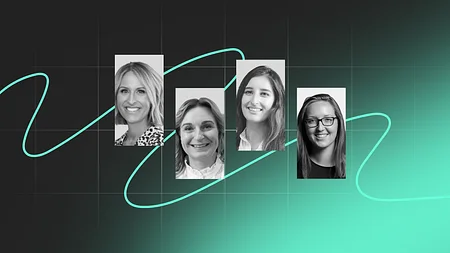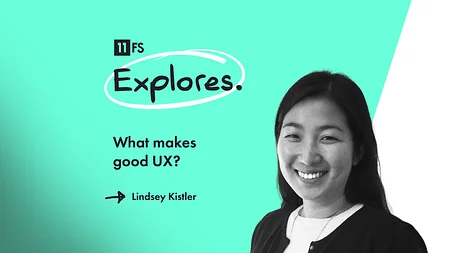Making inclusive design more inclusive

As July continues apace, brands all over the world are rolling up their rainbow logos and packing them away for another year.
For us, Pride month was a great opportunity to shine a spotlight on the brands that are having a positive impact on the lives of LGBTQA+ people and their finances, but also to reflect on how we could do better.
Throughout Pride month, we had some amazing conversations with people who are hustling to bring more inclusive products and services to life, and I’ve had some real lightbulb moments about what we need to do to make financial products and services more inclusive for everyone - particularly the LGBTQA+ community.
But surely financial products don’t discriminate based on sexual orientation or gender identity?
Unfortunately they do.
When we were doing some research for our Fintech Insider podcast, we learnt that gay couples applying for a mortgage in the US are 73% more likely to be turned down, and if they do get one, they’re likely to pay more in fees and interest rates.
There are also too many anecdotal examples of forms that STILL require people to choose binary male/female gender fields or pick from a limited set of traditional titles (Mr, Mrs, Miss…).
One of the unique issues for financial services providers is the legal requirement to verify people’s identities to meet KYC. For trans people this creates huge difficulties where the name they use in daily life may not be the same as the name on their passport or ID card.
There’s also evidence to suggest that less than half of LGBTQA+ Americans who were surveyed feel confident in their ability to make the right decisions to improve their financial wellbeing - including how to manage credit card debt or build savings.
So what is there to celebrate?
Actually, quite a lot. Although mainly in the USA.
Daylight is making waves as a queer bank that rewards customers for shopping with LGBTQA+-allied businesses.
True Name is a Mastercard feature for the bank’s debit and ATM card that enables cardholders to use their true first name on their cards without the requirement of a legal name change.
Euphoria, a Transition as a Service platform, has partnered with Jiko to bring Bliss to market. Bliss is a savings account designed specifically to help trans people save towards transition goals.
So what is inclusive design?
According to the British Standards agency, inclusive design is the design of mainstream products and/or services that are accessible to, and usable by, as many people as possible.
I think a better definition for what we want to achieve is: ‘Accessible to, and loveable by, as many people as possible.’ We’re aiming for a future where financial products and services are designed with belonging and equity in mind - not just usability.
We’re aiming for a future where financial products and services are designed with belonging and equity in mind - not just usability.
Currently, most products and services are designed for a largely mythical ‘middle ground’ because customers who have different needs get designed out of the process. As a society, we tend to call these people under-represented, but it’s more accurate to say that they’re excluded. Without getting too political about it, the only reason that trans people still struggle to get a bank card with their preferred name on it is because it just isn’t a priority for the big banks, because trans people’s rights and experiences aren’t a priority.
People are excluded from the design process for a variety of reasons that inclusive design tries to address. These include race, gender, sexual orientation, class, physical ability, cognitive ability, mental wellbeing, literacy, digital confidence, financial competence, age, location, religion… And these reasons for exclusion don’t exist in isolation. They combine to create a world filled with people who are, to varying degrees, confronted with products and services that fall short.
How can we [all] design more inclusively?
The single biggest thing that we can all do to design more inclusively is to involve a more diverse range of people as part of the design process. I guarantee that the insights you gather and the ideas they inspire will help make your products and services better for everyone, not just people with diverse needs.
The single biggest thing that we can all do to design more inclusively is to involve a more diverse range of people as part of the design process.
We got into a great conversation on the podcast a few weeks back about why designing for representation and belonging is difficult. How do you show representation for LGBTQA+ people who are single? And what does representation look like for a trans woman? I had a bunch of assumptions about how brands could tackle this and they were dismantled pretty quickly by talking to people who are living the experience, not just guessing with good intentions from the outside.
The second biggest thing is to protect those ideas. In our experience, people don’t deliberately design products that aren’t inclusive - but they also don’t prioritise the things that will make them more so.
So what happens now Pride month is over?
11:FS has built a reputation and a business that gives us unique access to the financial services industry. Every day, we work and talk with the leaders of some of the most exciting companies in the world. And we’re almost always helping them to build new products and services that answer their business needs by answering their customer needs.
If we can make each of those new products or services 1% more loveable through inclusive design, then we can set a precedent that the rest of the industry will start to follow.
And if you all ask inclusive design questions in your jobs as designers and product people, in your roles as leaders and in your lives as customers, then we’ll change the status quo quicker than you can say: ‘Should we stick a rainbow flag on here?’
We haven’t been making enough noise about how important it is to us that the products we ship are as inclusive as possible. Until now. So, think of this as our commitment to making the future of financial services 1% more inclusive with every project we work on. Watch this space.
Why only 1%?
Because everyone can commit to that. And we’d like you all to commit to it as well.
Inclusive design - building financial services for everyone
In our latest report, we make the argument against designing for the 'average user' and how FS needs to build products and services that cater to as many people as possible. Take the first step towards making that change and give it a read.
Get the report



